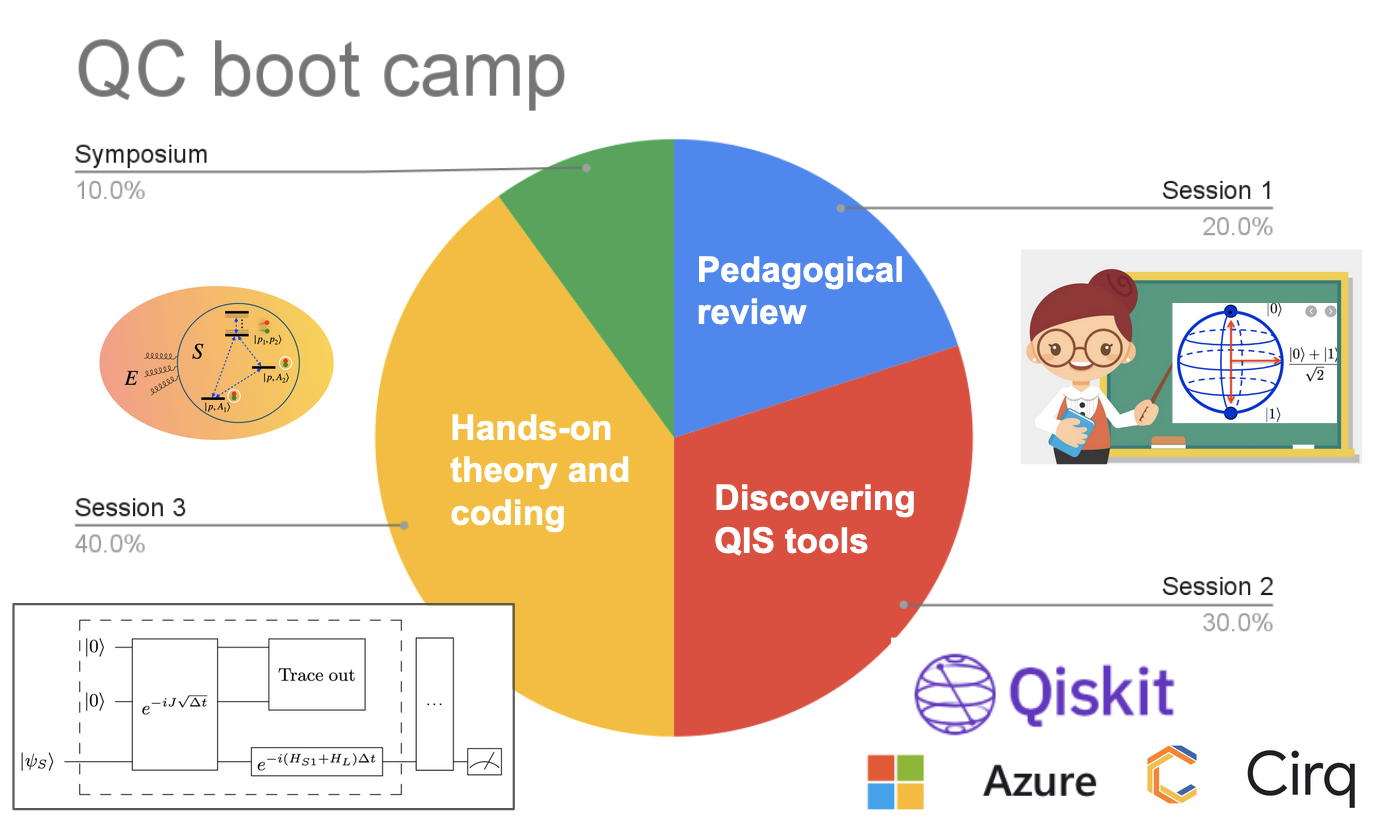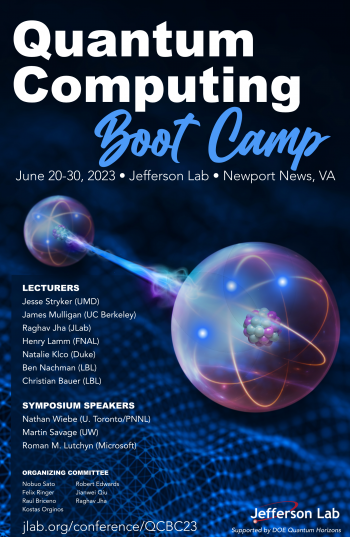In person @ CEBAF Center F113
Jefferson Lab
Newport News, VA

The program
Being able to observe emergent phenomena and understand its consequences directly from the standard model of particle physics remains the primary goal of the nuclear physics community. Quantum Chromodynamics (QCD), the fundamental theory of the strong nuclear force which describes the interactions between quarks and gluons, continues to be the most opaque sector of the standard model. A broad experimental program, at Jefferson Lab and other Department of Energy facilities, has been designed with the aim of shedding light into connection between the fundamental constituents of QCD, quarks and gluons, and the actual eigenstates of the theory, hadrons.
With the 12 GeV nuclear physics program at Jefferson Lab underway, along with ongoing programs at RHIC and LHC, as well as plans for a future Electron-Ion Collider (EIC) facility, it is important to have a QCD-based theoretical program running in parallel. This theoretical effort will not only confirm experimental observations, but also guide and complement forthcoming searches. This program will constrain outstanding observables that are key in understanding QCD phenomena, ranging from the masses and decay mechanisms in the exotic sector to the three-dimensional resolution of nature’s most basic building blocks.
Given the non-perturbative nature of the theory, the community has had to resort to ab initio numerical frameworks that make no approximations on the underlying dynamics, the most prevalent example being lattice QCD. Despite its successes, lattice QCD is most naturally defined in a Euclidean spacetime and therefore is limited in scope as far as the classes of observables that may be accessed. For example, inclusive reactions may be minimally constrained via lattice QCD. Therefore, in order to have a comprehensive QCD-based theoretical effort, the field is turning its attention to quantum computing, where real-time correlators may be more readily accessed.
With Google's quantum supremacy experiment marking the beginning of the Noisy Intermediate Scale Quantum (NISQ) computing era, it is expected that a broad range of applications with 50-100 qubits can provide computational solutions that are impossible for classical computers. While solving QCD is currently beyond the reach of NISQ computers, researchers in nuclear physics (NP) and high-energy physics (HEP) are beginning to explore simple quantum field theories (QFTs) using quantum information science (QIS) technology. These exploratory studies, which parallel those performed using lattice QFTs in the 1980s and 1990s, will guide future QCD calculations. Key examples of these on-going studies include a variety of phenomena (hadronization, matrix elements of Wilson line, form factors, etc.) that will be relevant for subsequent QCD calculations. The success of these exploratory applications relies on the possibility to work with quantum computers by designing and testing simulated or real quantum circuits on dedicated computing software. For instance, IBM has developed an open-source toolkit known as “Qiskit” in the Python programing language (used in all the aforementioned NP/HEP studies) with several domain-specific application API’s, which can run on any laptop and IBM’s quantum processors can be accessed via cloud services. Similarly, Google has provided their own Python library known as “Cirq” and at Microsoft topological quantum devices are being developed along with its “Azure Quantum” cloud services.
With the previous funding cycle from Quantum Horizons initiatives, the theory group at Jefferson Lab has successfully executed a series of dedicated lectures on QIS with invited speakers that have disseminated the state of the QIS field to the local experts in nuclear physics, as well as students and postdocs from a number of institutions in the country. It is worth remarking that this lecture series will closely parallel ongoing efforts at the lab to study EIC physics using tabletop experiments, which are supported by Jefferson Lab’s Laboratory Directed Research & Development. In this program we plan to move to the next stage of QIS engagement. We plan to execute a boot camp involving a pedagogical introduction to the QIS, coding tools and hands-on interactive lectures from NP/HEP experts mentoring explicit QIS implementations of their physics problems. We plan to end the program with a symposium day with round table discussions with experts in field.
Lecturers
- Christian Bauer (LBL)
- Raghav Jha (JLab)
- Natalie Klco (Duke)
- Henry Lamm (FNAL)
- Randy Lewis (YU)
- James Mulligan (UC Berkely)
- Ben Nachman (LBL)
- Sarah Powell (YU)
- Jesse Stryker (UMD)
Symposium Speakers & Panelists
- Joan Dreiling (Quantinuum)
- Natalie Klco (Duke)
- Philip Makotyn (PMG Quantum Advisors)
- Jay Deep Sau (UMD)
- Martin Savage (UW)
- Nathan Wiebe (U. Toronto/PNNL)
Student Support
Thanks to a grant from the United States Department of Energy "Quantum Horizons", we will be able to offer a limited number of standard support that will cover lodging at the SURA residence facility (where kitchen facilities are available) and a contribution towards meal expenses. Students/postdocs interested in this opportunity should note so in the registration page, and address their financial need in the appropriate field. The deadline is April 30th, 2023.
Note: The boot camp will be preceded by HUGS 2023, a 3-weeks long graduate-level summer school on nuclear physics. Student support is available, see the HUGS 2023 home page.
Organizing Committee
- Raul Briceno
- Robert Edwards
- Raghav Jha
- Jianwei Qiu
- Kostas Orginos
- Felix Ringer
- Nobuo Sato (Chair)
Contact
QCBC at Jefferson Lab
Attn: Mary Fox, Suite 1, MS-12H2
12000 Jefferson Avenue. Newport News, VA 23606
Phone: (757) 269-6263 Fax: (757) 269-7002
e-mail: QCBC@jlab.org


